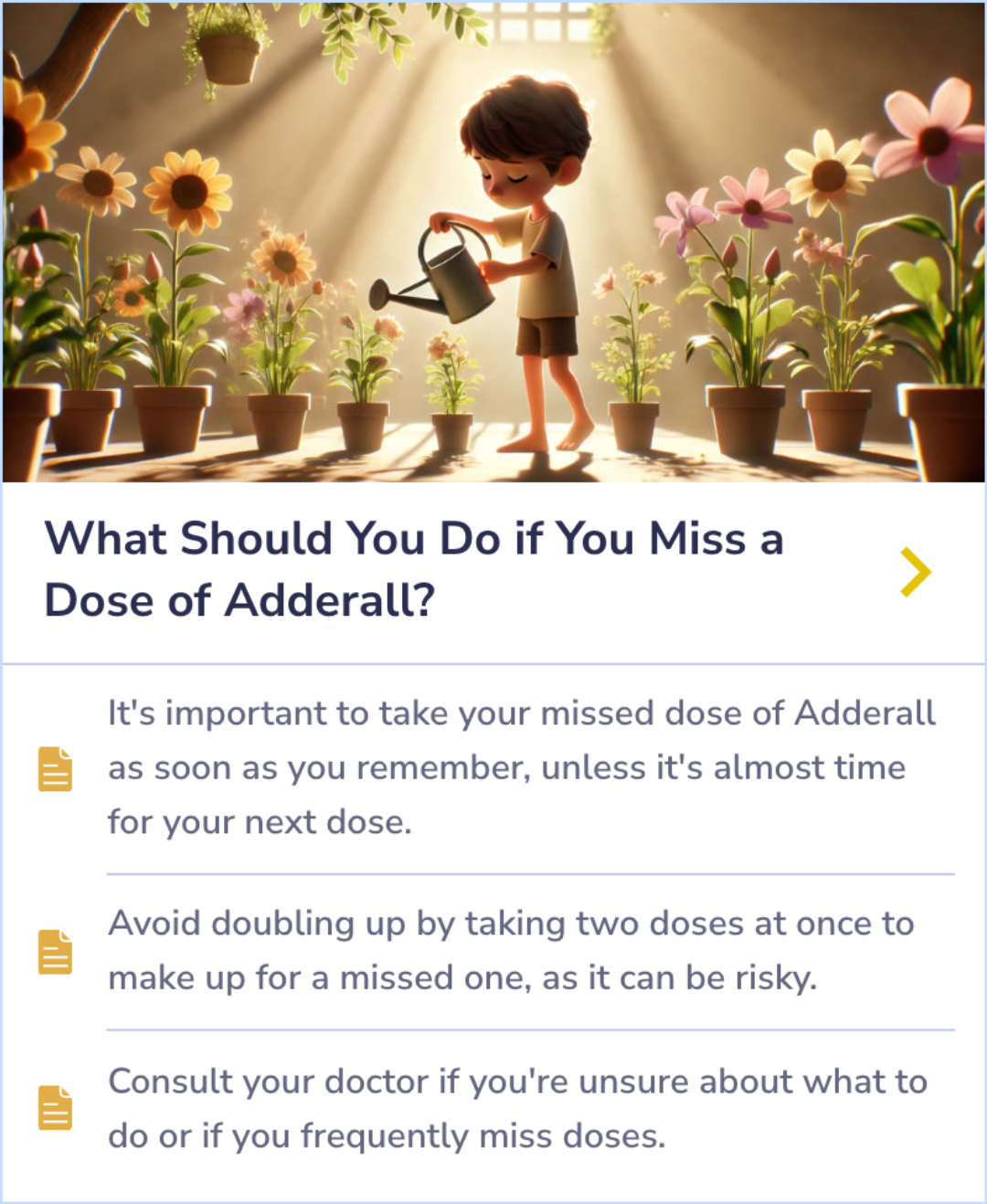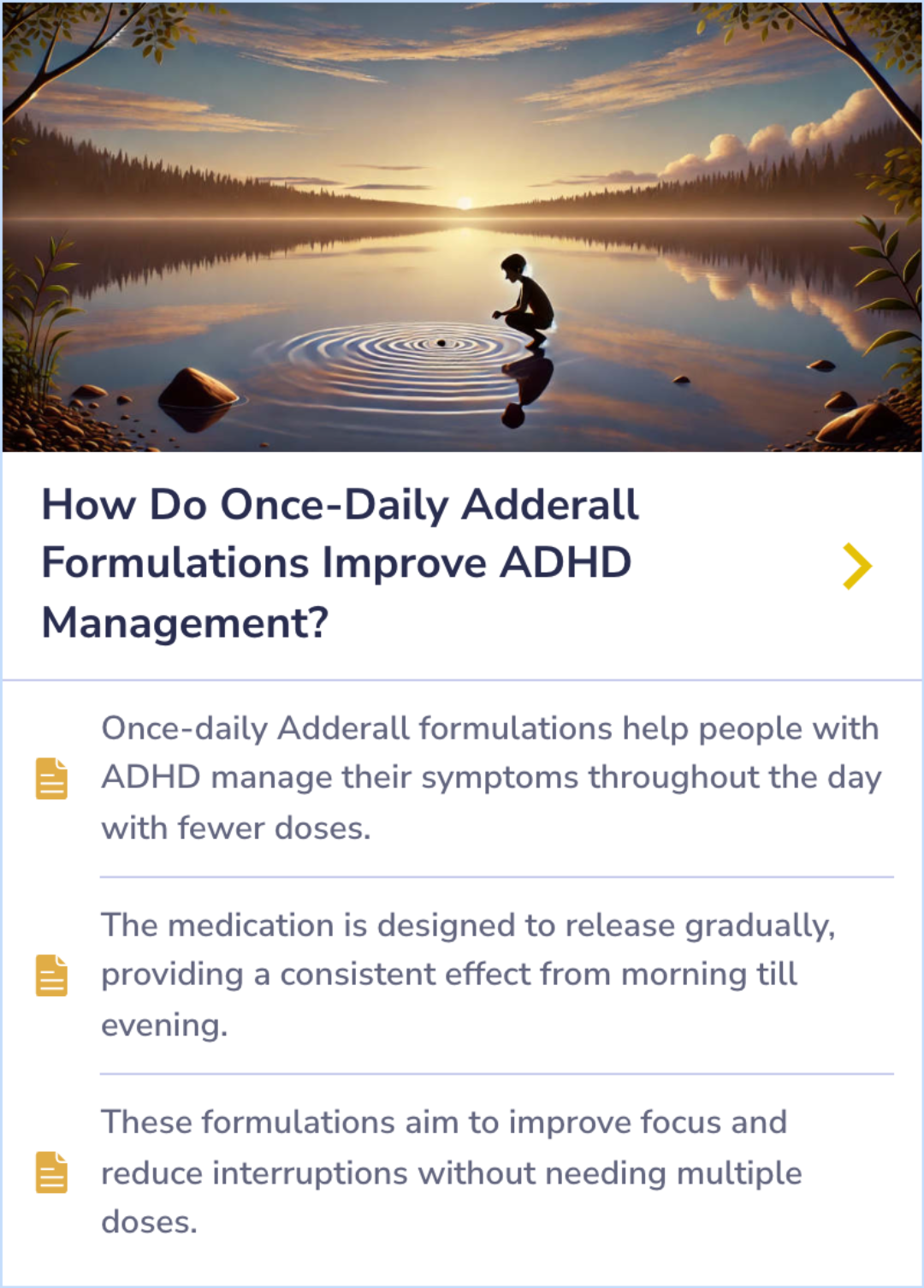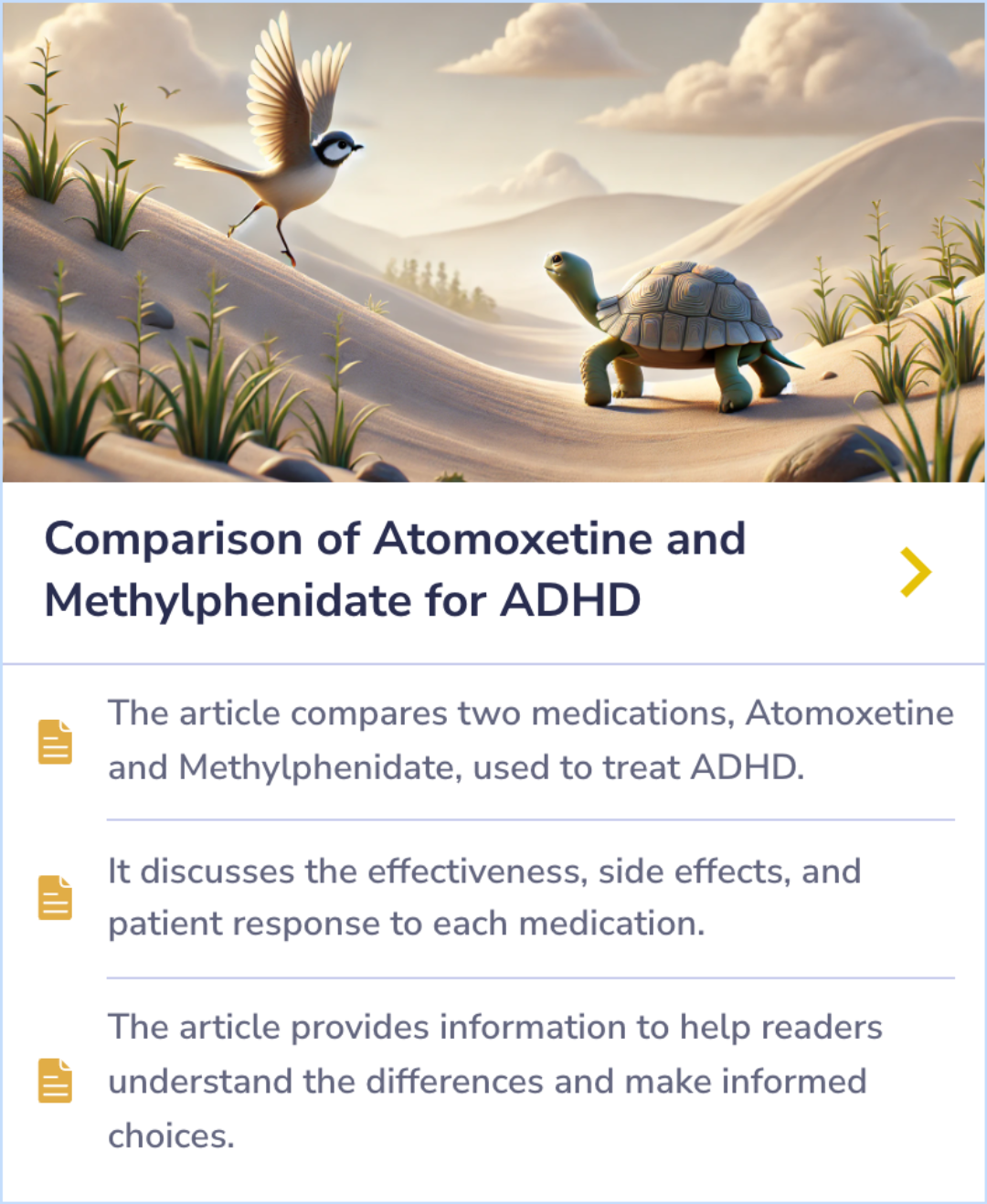Adderall
Evidence Based Answers
Adderall Dosing Guidelines
Adderall dosing for children with ADHD starts at low levels, with gradual weekly increases until the right response is found. Safety is maintained with a typical max dose of 40 mg for children. Dosing varies for ADHD and narcolepsy.
Published: November 11, 2024
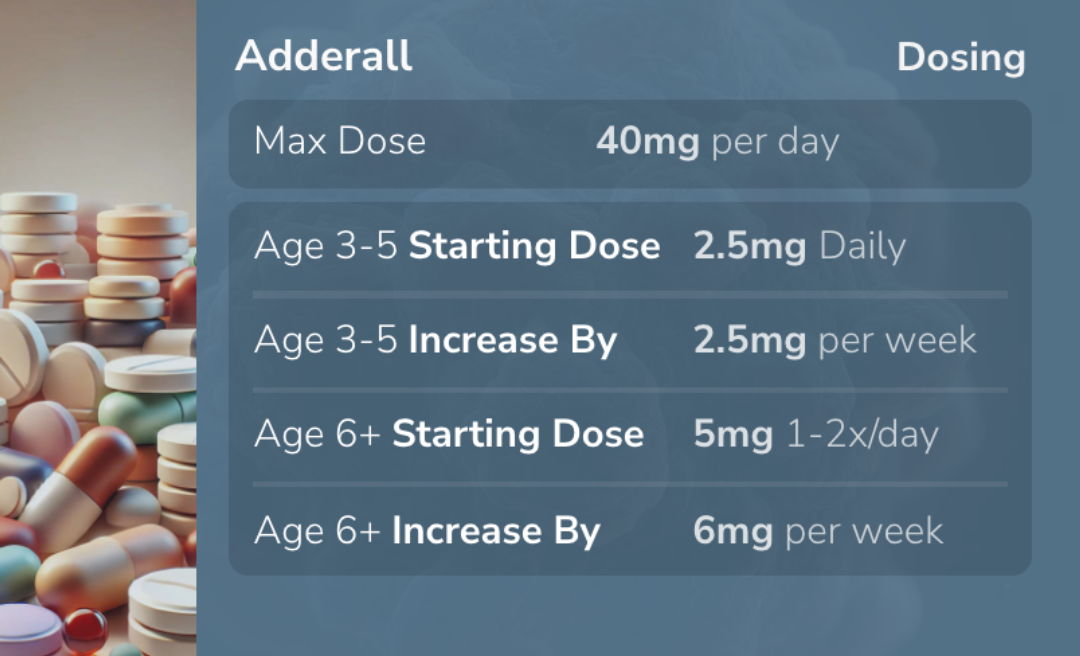
Adderall dosing starts low, adjusted weekly; max 40 mg for kids, higher for narcolepsy.
Starting Doses for Children with ADHD
For children aged 3 to 5 years, the starting dose of Adderall is 2.5 mg daily, which may be increased by 2.5 mg each week until the optimal response is achieved.
Children aged 6 years and older typically begin with 5 mg daily, with the dose increased by 5 mg weekly as needed. This gradual adjustment helps find the most effective dose.
In rare cases, the daily dose may exceed 40 mg, but this is uncommon.
Children aged 6 years and older typically begin with 5 mg daily, with the dose increased by 5 mg weekly as needed. This gradual adjustment helps find the most effective dose.
In rare cases, the daily dose may exceed 40 mg, but this is uncommon.
“
Source Quotes:
In children from 3 to 5 years of age, start with 2.5 mg daily; daily dosage may be raised in increments of 2.5 mg at weekly intervals until optimal response is obtained.,In children 6 years of age and older, start with 5 mg once or twice daily; daily dosage may be raised in increments of 5 mg at weekly intervals until optimal response is obtained.
Adjusting Adderall Dosages
Adjusting Adderall dosage is done gradually, with weekly increases based on the patient's response. This helps ensure that the dose is both effective and safe.
The maximum dosage for children is generally 40 mg per day, with higher doses rarely necessary.
The maximum dosage for children is generally 40 mg per day, with higher doses rarely necessary.
“
Source Quotes:
Daily dosage may be raised in increments of 5 mg at weekly intervals until optimal response is obtained.,Only in rare cases will it be necessary to exceed a total of 40 mg per day.
Dosing for ADHD vs. Narcolepsy
For ADHD, Adderall is typically dosed between 5 mg and 40 mg daily, split into 1 to 3 doses.
In contrast, for narcolepsy, doses range from 5 mg to 60 mg daily, also divided into several doses.
The dosing strategy differs based on the goals of treatment for each condition.
In contrast, for narcolepsy, doses range from 5 mg to 60 mg daily, also divided into several doses.
The dosing strategy differs based on the goals of treatment for each condition.
“
Source Quotes:
Dosing by indication is as follows: * ADHD: 5 to 40 mg daily divided from one to three doses - divided doses should be at 4 to 6-hour intervals. Doses exceeding 40 mg are rarely more effective.,* Narcolepsy: 5 to 60 mg daily divided from one to three doses; start with 10 mg each morning, increasing dose by 10 mg daily each week; divided doses should be at 4 to 6-hour intervals.
Timing of Adderall Doses
Adderall is usually taken first thing in the morning. If additional doses are needed, they are spaced 4 to 6 hours apart.
This timing helps manage symptoms throughout the day while minimizing sleep disruptions.
Adjustments to the timing or dose may be required to avoid excessive side effects.
This timing helps manage symptoms throughout the day while minimizing sleep disruptions.
Adjustments to the timing or dose may be required to avoid excessive side effects.
“
Source Quotes:
Give first dose on awakening; additional doses (1 or 2) at intervals of 4 to 6 hours.
Divided doses should be at 4 to 6-hour intervals.
Key Takeaways
Conclusions
Adderall dosing guidelines emphasize starting with low doses and gradually increasing based on the patient's response, ensuring efficacy and safety for conditions like ADHD and narcolepsy. For children, adjustments typically occur weekly, with a common dosage cap at 40 mg daily for ADHD.
This methodical approach allows for individualized treatment plans while addressing specific needs, such as minimizing side effects and maintaining effective symptom management throughout the day.
This methodical approach allows for individualized treatment plans while addressing specific needs, such as minimizing side effects and maintaining effective symptom management throughout the day.
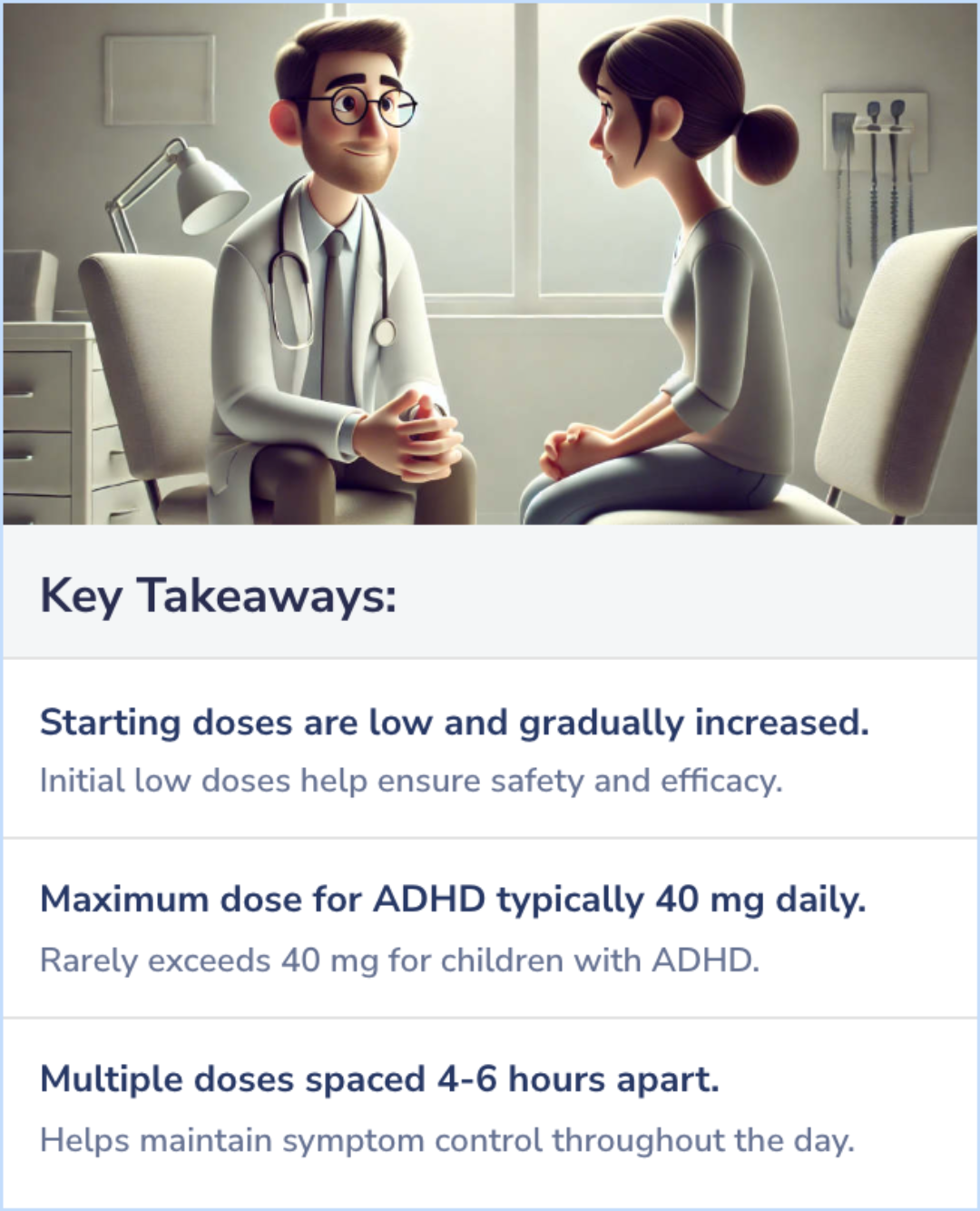
Evidence Summary
Managing Missed Doses of Adderall Safely
If you miss a dose of Adderall, take it as soon as possible, unless your next dose is approaching. Doubling up doses to make up for a missed one can lead to risks and should be avoided. Always talk to your doctor if you're uncertain about what to do or if missing doses becomes frequent.
Taking a missed dose too close to your next one may cause unwanted side effects. It's best to seek medical advice if you're unsure about adjusting your schedule.
Taking a missed dose too close to your next one may cause unwanted side effects. It's best to seek medical advice if you're unsure about adjusting your schedule.
Evidence Summary
Consistent Focus with Once-Daily Adderall
Once-daily Adderall formulations offer a steady release of medication, helping individuals with ADHD stay focused without needing multiple doses. By spreading out the release, these formulations support consistent symptom control from morning to evening.
Reducing the need for frequent dosing helps minimize interruptions and enhances overall focus, allowing individuals to better manage their daily tasks and routines.
Reducing the need for frequent dosing helps minimize interruptions and enhances overall focus, allowing individuals to better manage their daily tasks and routines.
Evidence Summary
Comparing Atomoxetine vs Methylphenidate for ADHD
Atomoxetine and Methylphenidate, both prescribed for ADHD, offer distinct benefits and challenges. Atomoxetine is often used for those who may not respond well to stimulants, while Methylphenidate is known for its faster action. Side effects vary between the two, with Atomoxetine potentially causing nausea and Methylphenidate more commonly linked to appetite suppression.
The comparison highlights patient responses, including different rates of effectiveness. Each treatment can cater to individual needs, providing unique paths to symptom control.
The comparison highlights patient responses, including different rates of effectiveness. Each treatment can cater to individual needs, providing unique paths to symptom control.
